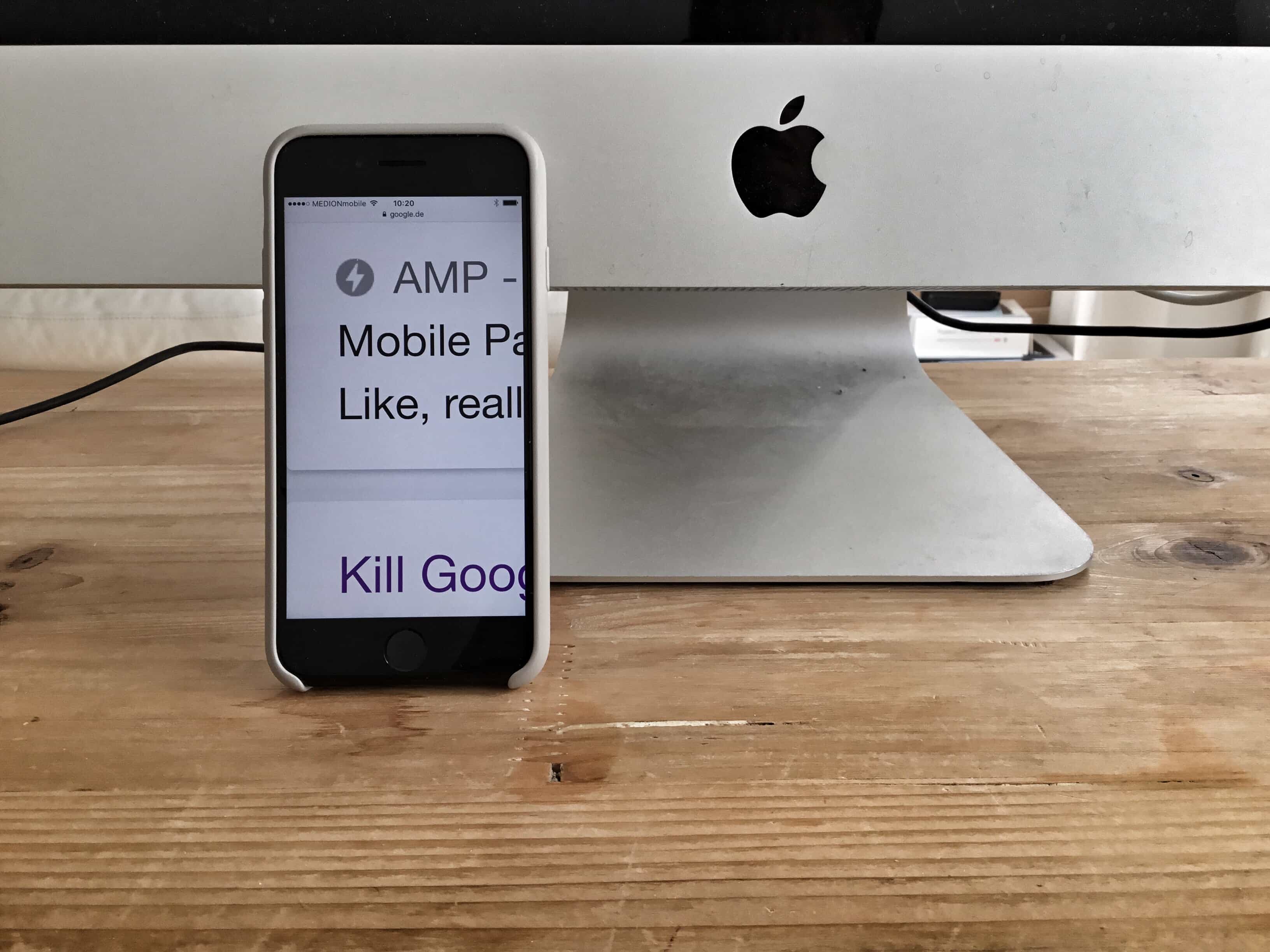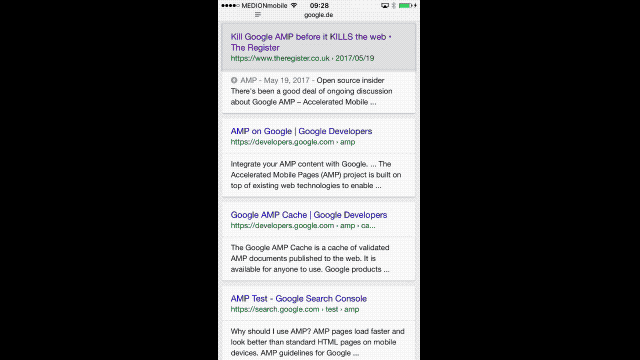Google’s web-hostile AMP scheme makes copies of web pages, shrinks them, and serves them instead of the original when you click on a Google search result. It renders your content in non-standard HTML, and removes the original link to the article’s source. Whenever you share the page you’re reading, it forces you to share a the Google AMP URL instead of the original.
Unless you’re using an iPhone, that is. In iOS 11, Mobile Safari strips AMP from any links you share. And iPhones running iOS 10 will load the non-AMP version (i.e. the original version) of a page if you press a link with 3D Touch.
Google AMP is bad
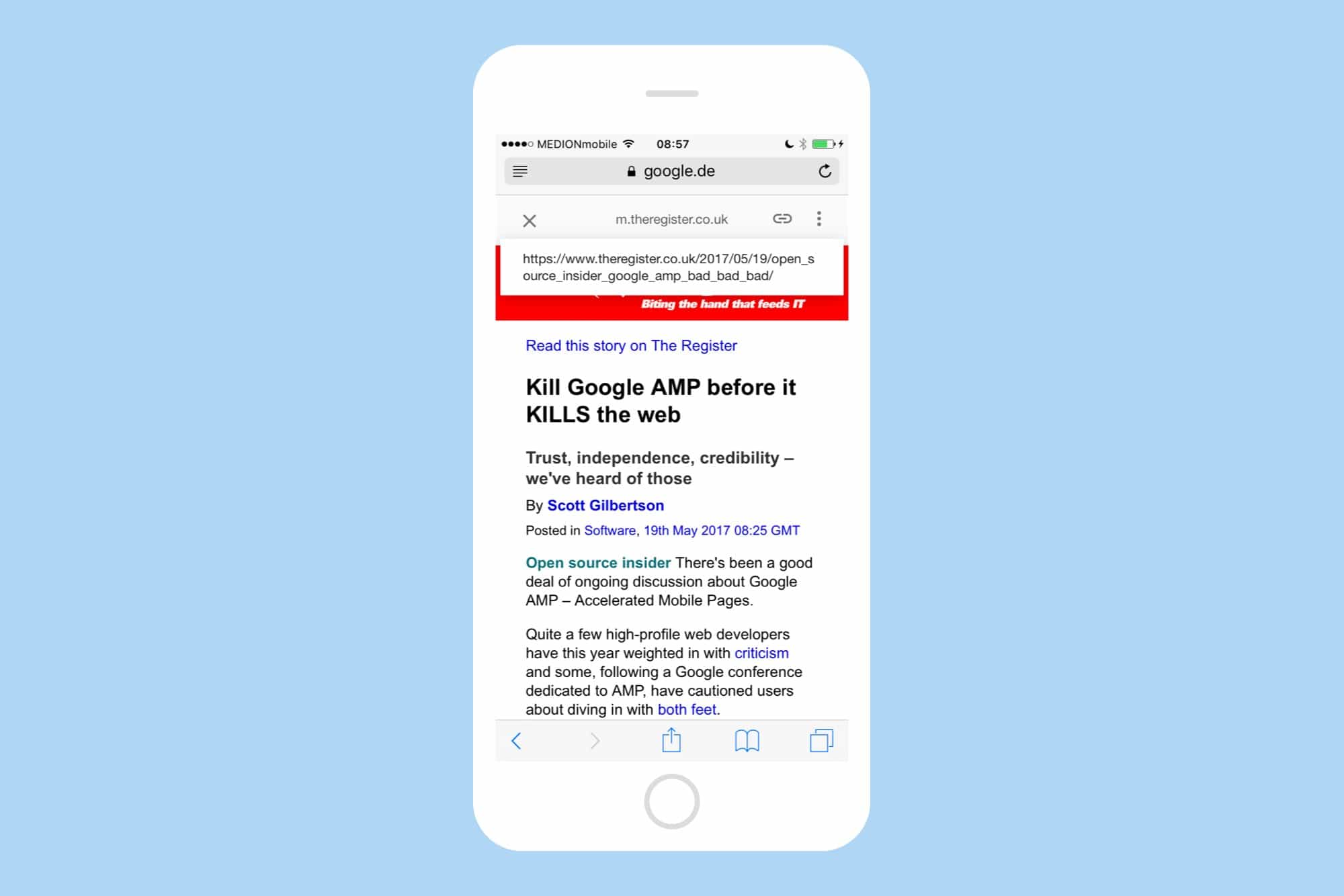
Photo: Cult of Mac
AMP is Google’s way of appropriating content (with the permission of site owners), in order to keep you in the Google “ecosystem” for as long as possible. Forget the old Google, which was happy to help you find a web page, show you some ads while you were looking, and then send you on your way.
That Google only made billions of dollars per year, so the new Google wants to keep you around, looking at its ads, for longer. The excuse for this is that AMP pages are smaller, and load faster on mobile. That may or may not be true (Google says that it strips out heavy Javascript to speed up the pages, but it does this by adding its own Javascript).
There are a few way to avoid AMP, and make sure you are reading the original, unchanged source page. One is to not use Google. Try something like Duck Duck Go instead.
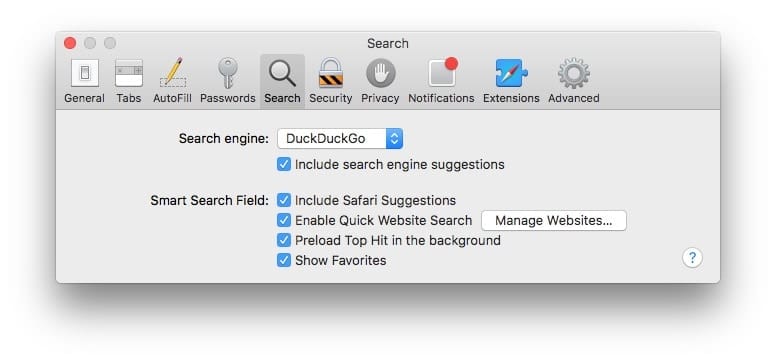
Photo: Cult of Mac
Or, you can use Google on any device other than an iPhone. AMP is only enabled for the iPhone. If you’re using Safari on the Mac or iPad, then it doesn’t kick in. But if you are using an iPhone, then Apple has you covered.
How to disable Google AMP on an iPhone
The beauty of this tip is that you have to do almost nothing. In iOS 11, any time you share a web page that has been co-opted by AMP, then Mobile Safari will automatically strip the AMP crap out, and use the original URL. You don’t have to do anything. Instead of the nonsense on the left, you’ll see the goodness on the right:
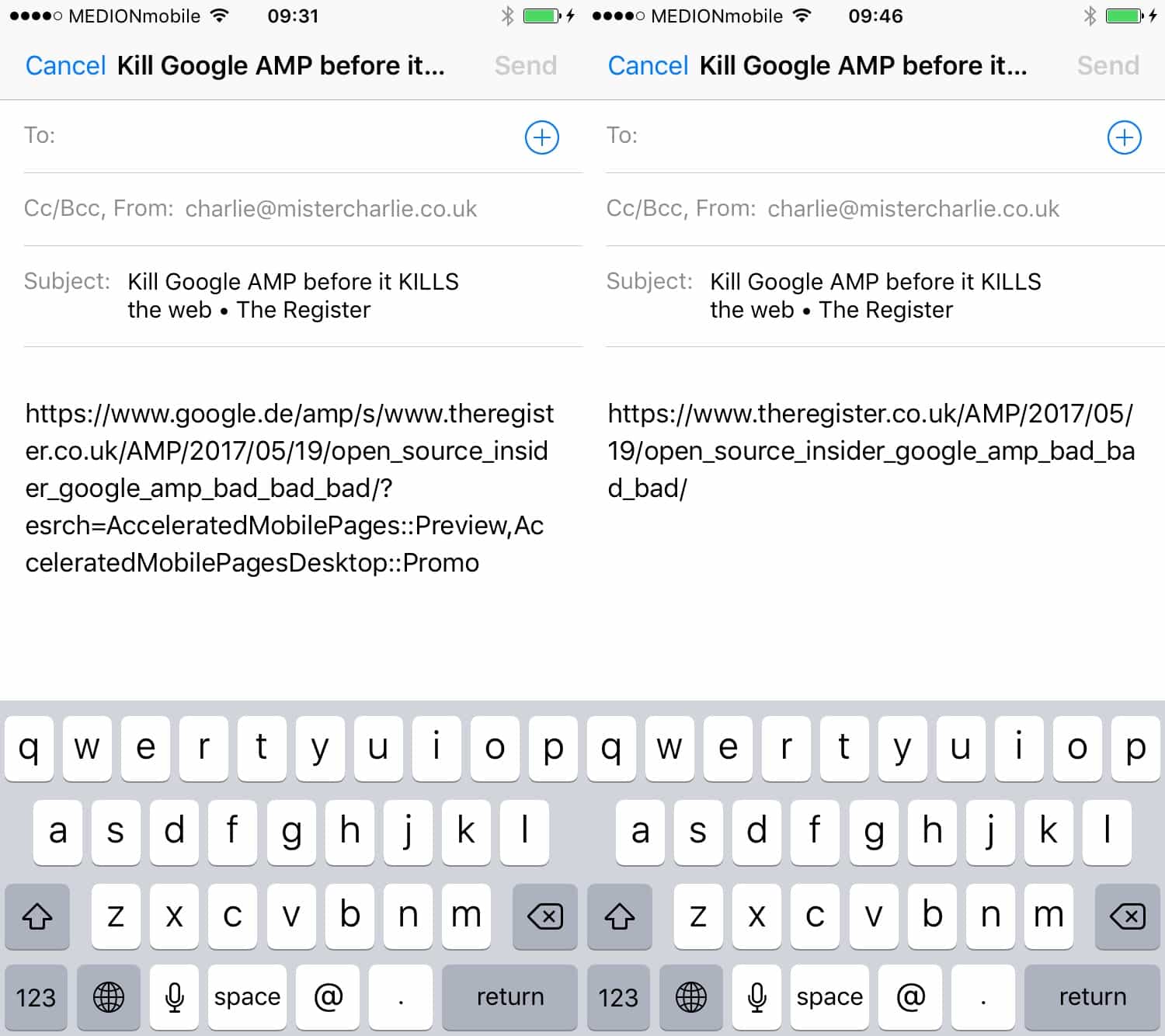
Photo: Cult of Mac
Right now, in iOS 10, you can also 3D-Touch an AMP link in Google’s “search” and Safari will load the non-doctored version of the page i.e. the original page. This is a little more effort, but it at least gives you an easy choice. Perhaps you are on your iPhone, with only a little data left in your cellular plan, and you really want to read that Verge or iMore story without its tracking scripts eating up the your remaining megabytes. In that case, you can opt for AMP, and let Google’s scripts eat your bandwidth instead. Here it is in action:
That’s it. Apple, clearly hates AMP as much as any sane person, and has fixed it for us. You could argue that it goes too far with the auto-stripping of shared URLS in iOS 11, but ask yourself, who would ever prefer to share an AMP URL over the real URL? A psychopath, that’s who. A crazed psychopath.
